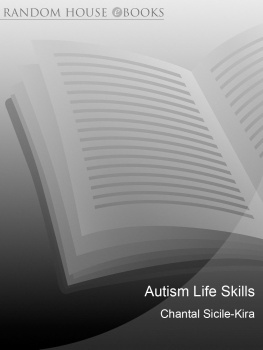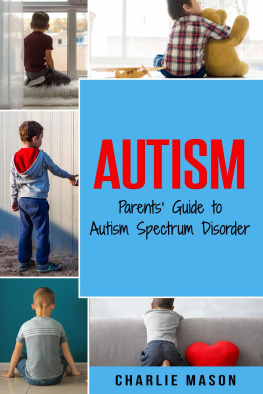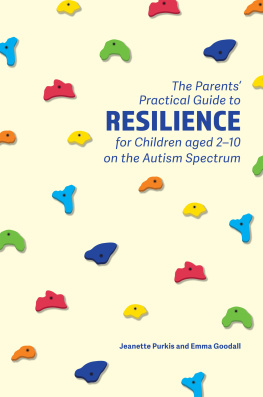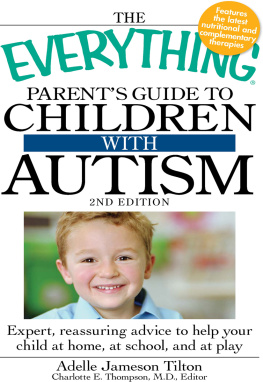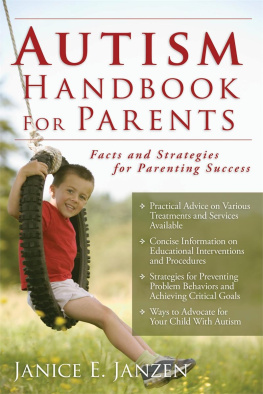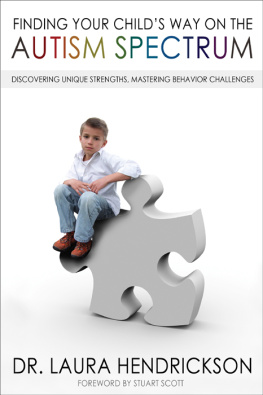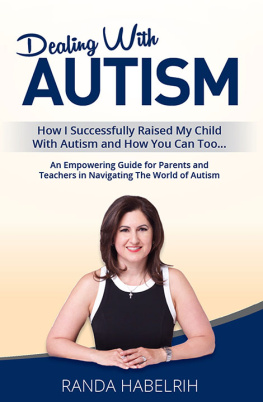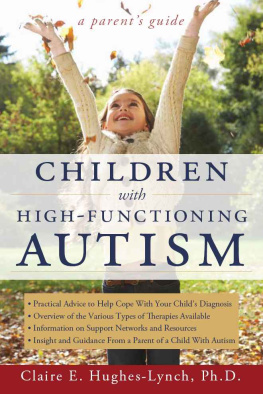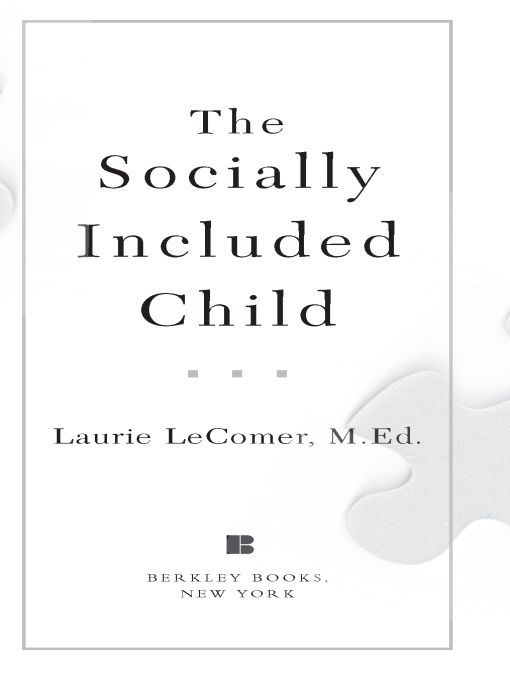Table of Contents
Praise forThe Socially Included Child
This book has practical solutions and great strategies that will no doubt help you and your kids get out and enjoy!
Jenny McCarthy, New York Times bestselling author
This book is an indispensable resource to empower parents with practical, hands-on help as we seek to reconnect our kids with the real world.
Lynn M. Hamilton, parent and author of Facing Autism:Giving Parents Reasons for Hope and Guidance for Help
Chock-full of practical methods for teaching children with autism. Great for both parents and teachers.
Temple Grandin, author of Thinking in Pictures
When youre the parent of a child with autism, you know how vitally important it is to increase your childs social skillsand how challenging a task that can be. Thankfully, LeComer offers concrete strategies for facilitating your childs social interactions.
Claire LaZebnik, coauthor of Overcoming Autism and Growing Up on the Spectrum
Children with autism and autism spectrum disorders can benefit significantly from inclusion in family, community, and school activities ... Parents and family members will find this an invaluable resource.
Fred R. Volkmar, M.D., Director, Yale Child Study Center
LeComer truly gets it, as my son would say, and has come up with practical, easy-to-use strategies to make social activities successful for the child with autism and enjoyable for everyone else. Knowing your child and planning for these events is key. The I.D.E.A.L system LeComer has developed is a great tool. I highly recommend this book.
Chantal Sicile-Kira, author of Autism Life Skills
A Parents Guide to
Successful Playdates,
Recreation, and
Family Events for
Children with Autism
Most Berkley Books are available at special quantity discounts for bulk purchases for sales promotions, premiums, fund-raising, or educational use. Special books, or book excerpts, can also be created to fit specific needs.
For details, write: Special Markets, The Berkley Publishing Group, 375 Hudson Street, New York, New York 10014.
For my sister, Karen, and my nephew and hero, Ben
And for Gavi, Darnell, Dana, Sarah, Tony, Ethan,
and Dylan, who unknowingly, but brilliantly, inspired
this book
ACKNOWLEDGMENTS
There are many people who put their special touches into the pages of this book. My inspiration for this work came from some wonderful kids with autismI wish all of you could have the pleasure of meeting them. They struggle daily, but are role models to all they come across, through their joy, humor, and strength. Each child has taught me unique and important lessons, and I thank them for those lessons and their company and love.
I am very thankful for the guidance of my agent, Judith Riven, and am greatly appreciative of her work on my behalf. And I am also grateful this book landed in the hands of my editor, Adrienne Avila, whose sound suggestions, deep interest, and intuitive understanding of the subject made this a better book. Thanks also to my publisher, Leslie Gelbman, and the staff at Berkley Books.
I am extremely grateful to those who had to live with me during the book writing processmy helpful and supportive husband, Victor, and my kids, Ian, Tyler, and Paige. And thanks to my father, Sherman Fivozinsky, and his wife (my friend) Carol Fivozinsky, for their support and uplifting conversations.
To Stephanie Vullo and Paula Schwartz, thanks so much for your friendshipI hope we can continue to watch our kids work their magic together. And thanks to Fred Volkmar, M.D., Jenny McCarthy, Temple Grandin, Claire LaZebnik, Chantal Sicile-Kira, and Lynn Hamilton, for their support of this project. I appreciate so very much the time (and vacation time!) spent on this books behalf.
Many other friends and colleagues have challenged and inspired me: Leslie Bernstein, Melissa OConnell, Lucia Green, Douglas Rushkoff, Rachel Fleishman, Lisa Horowitz, Melinda Gardiner, Ellen Talley Lotsky, Julie Seen, Joan Villegas, Joann White, Kristen Mosher, Carole MacDonald, Meg Barlow, Douglas Martung, Connie Mandrozos, Mike Abraham, Jacalyn Pap stein, Stephanie Miklos, Lisa Norcross, Ann-Marie Soto, Sarah Stevens, Carol Bloch, Marybeth Buckwald, Liz Horvath, Liz Finck, Alyson Martin, Beth Lukas, Catherine Rotundi, Cathy Lambert, Jessica Woods, and Kathy Smith.
Also, a gracious, heartfelt thank-you to Carol Sissala, Easter Seals Treatment Center of Montgomery County, Maryland, the staff at Georgetown University Hospital, and Scarsdale public schools.
Thanks so much to my sister, Karen Feibus, for our discussionsand the intelligent suggestions that helped keep me sane through many long nights. And thanks to Jon Feibus for the much-needed brotherly support.
Lastly, I would like to give a special thank-you to the parents I have come to know well, and who were gracious enough to share their stories.
Introduction
Today, a young student of mine with autismJeremyapproached a typical peer with the intention of initiating a social interaction. Jeremy has little language, and is unable to comfortably use his functional language with peers, but he donned a favorite cat puppet on his hand and approached another boy in the student support center. I, along with the other adults in the room, froze with bated anticipationand hopefor a successful initiation and a positive outcome for him. Jeremys efforts were new and exciting, but he had the comfort of embarking on this challenge in the relaxed atmosphere of his familiar, everyday environment. Jeremy was among people he had come to know well.
With little skips he approached the peer and grinned. He then took his cat puppet and gently opened and closed its mouth against the peers shoulder, as if the cat were nibbling the peers shoulder. The peer immediately smiled and exclaimed out loud with glee, Jeremys making the cat eat my arm! Did you see that? Jeremy repeated the munching action (now excited) with a munching sound, and both boys laughed together. To the naked eye, this may not seem like a great feat, but to those of us who have worked long and hard with Jeremy, it was better than Christmas. Jeremy did it. He took the initiative and moved past his communicative deficits and sensory processing difficulties for a beautiful moment of shared joy and friendship.
I began working with children with autism in 1983 at an Easter Seals Treatment Center outside Washington, D.C. The children I worked with were nonverbal, and were incorporated into special needs classes of ten to twelve kids with multiple types of disabilities. At the time, autism seemed to be a rare and mysterious childhood affliction that robbed children of the desire to interact in our world. I remember joining one severely affected little boys play of tapping objects in the room with plastic belts. I would follow him and tap what he tapped. We did this together for long periods of time, and then I had the idea to tap his shoes, and he followed suit and tapped mine. This was the beginning of our communicationour ability to begin to request and respond to one another, but our bond had formed long before anyone would be able to officially take note. Even with the autistic little ones way back then, I was aware of the kids desire to connect in some wayalbeit their own waywith others. Even then, I didnt believe that children with autism choose to live solitary lives. And I dont believe it now. Like all of us, children with autism move toward what feels most comfortable to them.


